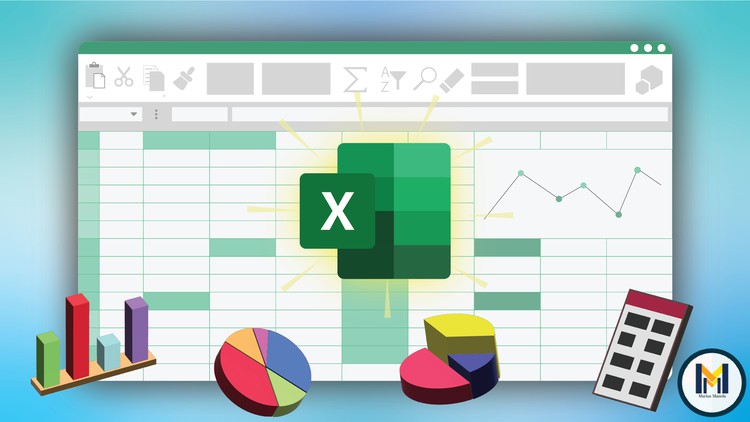
Excel into Microsoft Excel by taking this ultimate course from beginner to expert in MS EXCEL.
What you will learn
Learn how to use all of the Excel basic tools
Learn to Navigate MS Excel
Learn to format (text, cells, borders…)
Learn to create tables
Learn to work with charts
Learn about data analyzing
Learn to do Cell Operations
Learn the most useful Shortcuts
Learn to use the main Functions
Description
Excel is the most used spreadsheet program in the world, without any doubt. The skills to use Microsoft Excel properly can land you a job these days in no time.
Even though Excel is one of the most used programs in the Microsoft Suite, and there are 1.1 billion Excel users across the globe, most of those people don’t have any idea of how Excel truly works. And those that do know how Excel works, have only some basic knowledge about the program. The magical thing about Excel is that it has been built to make all of your work much easier, and all its tools were made to help you.
Most employees don’t use the special in-built tools that Excel uses, and therefore they have to do everything the old way, which takes an infinitely larger amount of time. With the right amount of knowledge, you can use Excel at work and speed up your work process up to x10.
This course will guide you through the most important tools Excel offers us, and how you can use them to speed up your work process.
————————————————————–
Why learn Excel?
Excel is used for:
- Data entry
- Data management
- Accounting
- Financial analysis
- Charting and graphing
- Programming
- Time management
- Task management
- Financial modeling
- Customer relationship management (CRM)
- Almost anything that needs to be organized!
————————————————————–
Here’s a list of the things you’ll know to do after taking this course:
- Know how to use the most basic tools for navigating through the program
- Be able to Input and format your data
- Create tables
- Create charts
- Format/Edit the charts and tables you will create
- Sort data
- Filter data
- Use functions most of the functions
- Much more
Content